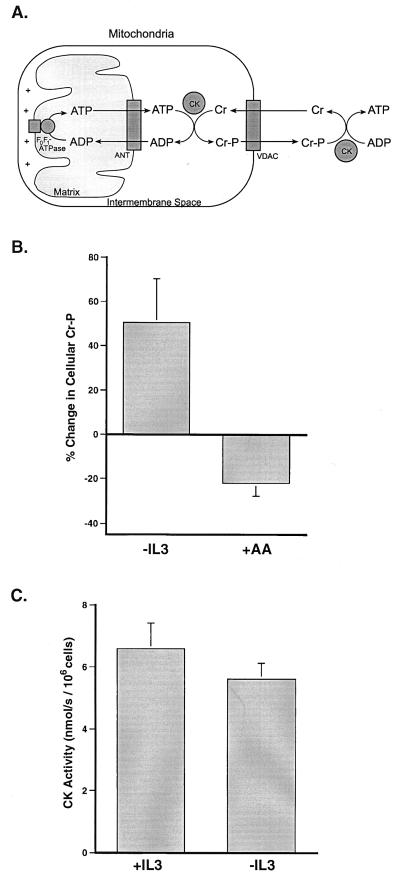Figure 2.
Growth factor-deprived cells accumulate creatine phosphate. (A) A schematic representation of the shuttle mechanism through which creatine/creatine phosphate (Cr/Cr-P) can buffer cytosolic ATP levels. (B) Cells were withdrawn from IL-3 for 12 h or treated for 30 min in the presence of IL-3 with the electron transport inhibitor, antimycin A, before the preparation of perchloric acid extracts. The amount of phosphocreatine present in the extracts was determined by using HPLC. The percent change in cellular phosphocreatine measured after IL-3 withdrawal (−IL3) and the addition of antimycin A (+AA) is shown. The data presented are the mean (+SEM) of at least four independent experiments. The changes in phosphocreatine observed in both cases were statistically significant by Student's t test (P < 0.05). (C) Creatine kinase (CK) catalyzes the reaction: ADP + Cr-P ↔ ATP + Cr, hence creatine kinase activity was assessed by measuring the ability of saponin-lysed cells to convert creatine phosphate to creatine in the presence of ADP. At the low concentrations used, saponin preferentially disrupts the plasma membrane of cells while leaving intracellular membranes intact. The CK activity present in lysates prepared from equal numbers of cells cultured in the presence (+IL3) or absence (−IL3) of IL-3 for 12 h is depicted. Data shown are the mean (+ one SD) of three independent measurements.

